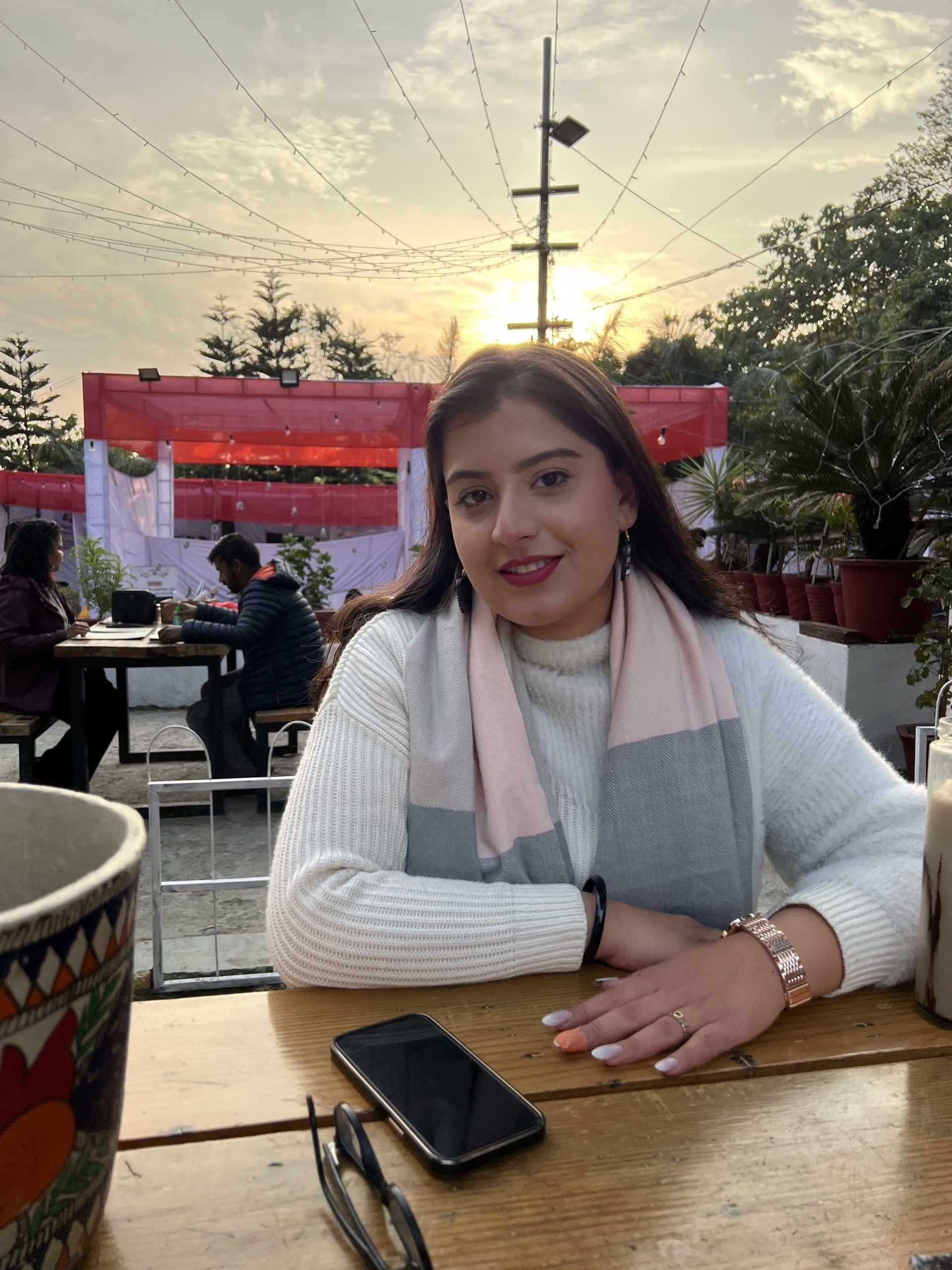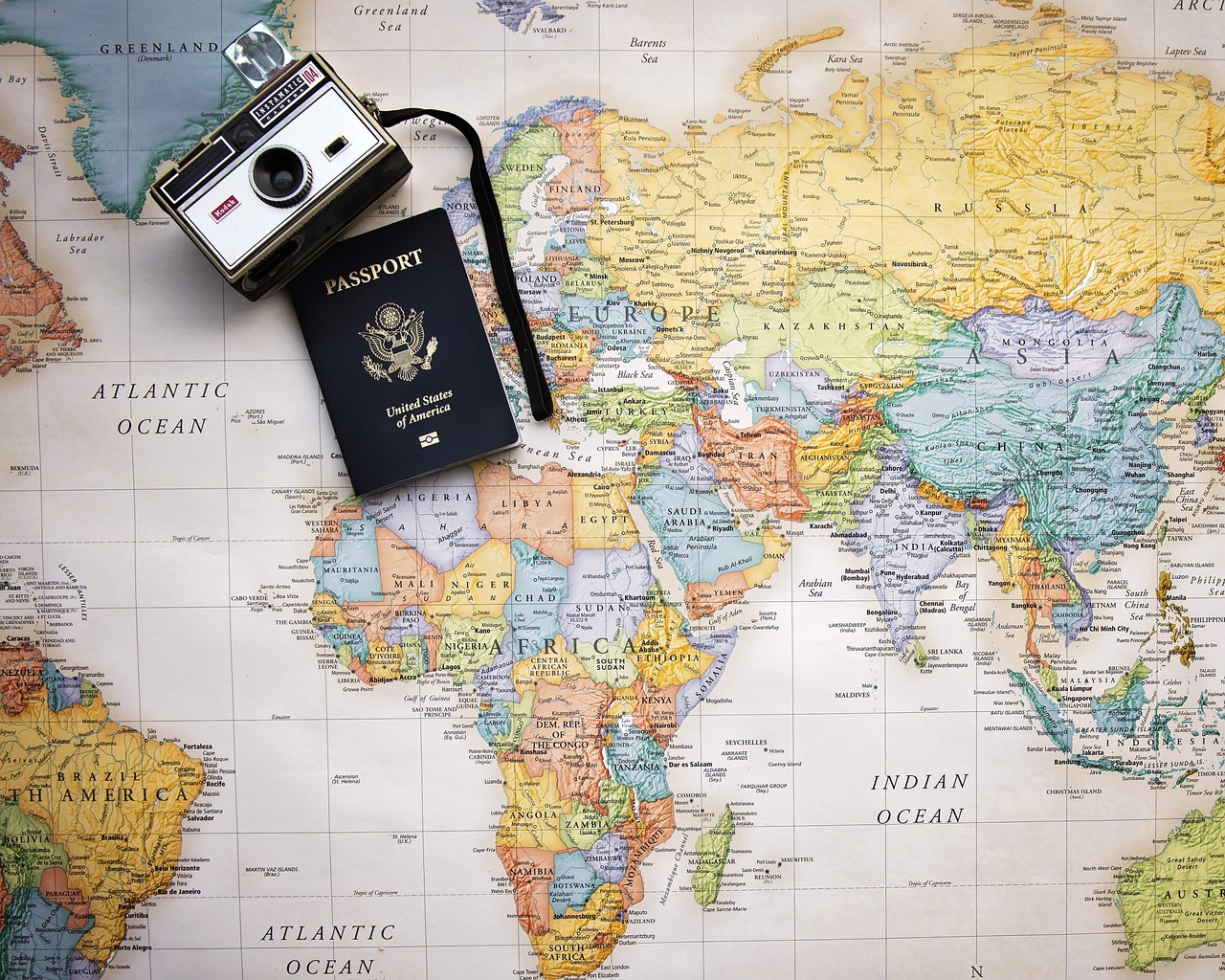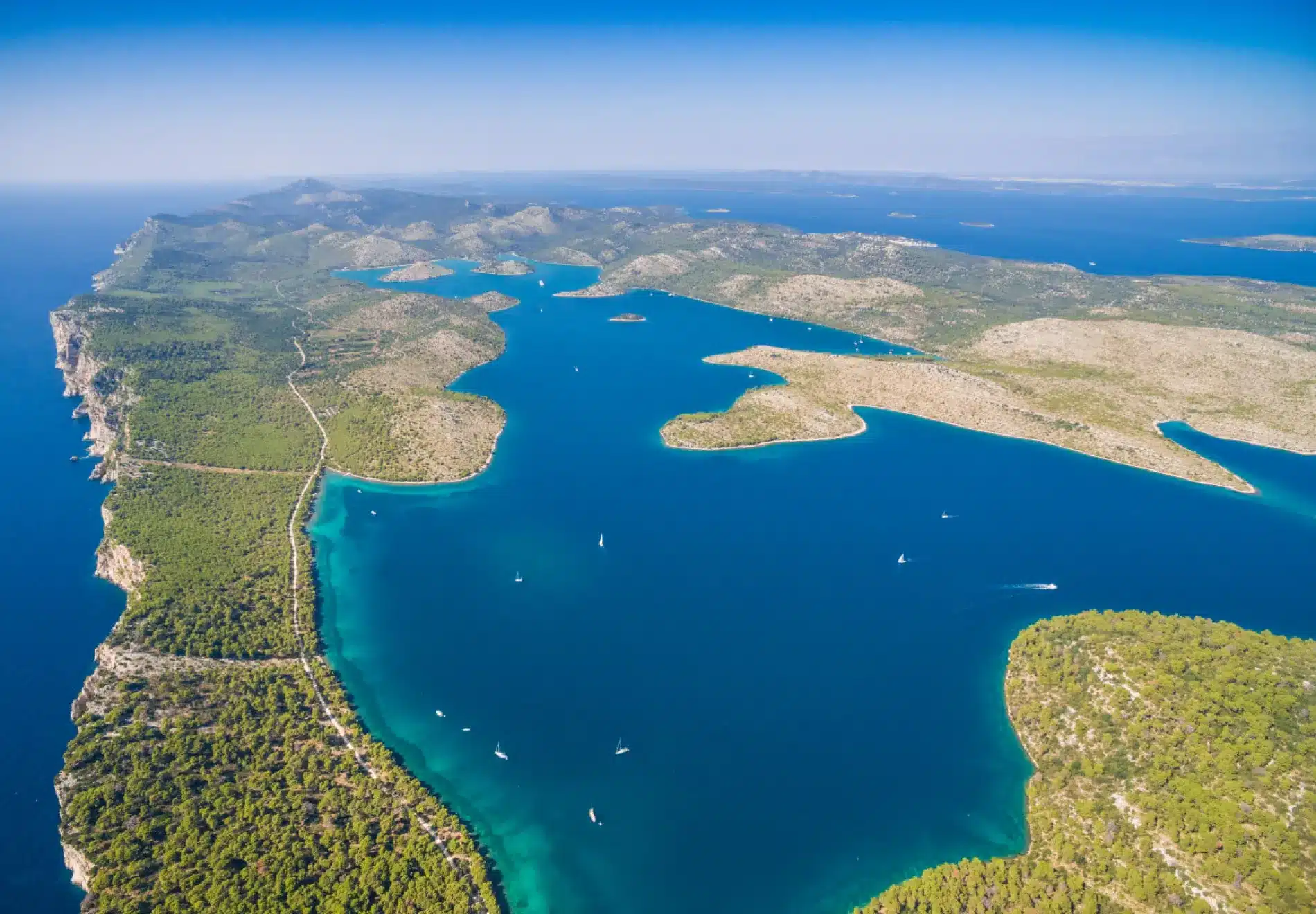The city of Seville is rich in atmosphere. In reality, it’s one of Spain’s most well-known metropolises. Seville is a dream destination with its orange-scented courtyards, beautiful Mudéjar architecture, and exuberant, spontaneous flamenco dancing in quiet plazas after dark. However, that’s only the first impression. Seville, Spain, is a city entire with exciting opportunities. It’s also an excellent destination during the colder months.
Royal Alcázar of Seville details
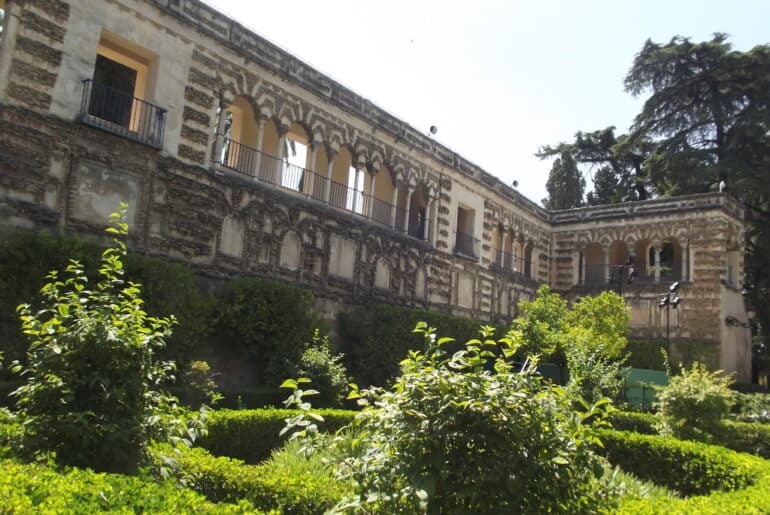
Seville’s Alcázar is a royal palace, although it was initially constructed as a stronghold in the 11th century upon the remains of the castle of Moorish monarch Abbad II. Pedro I of Castile enlarged and remodeled the palace in the 14th century, and his son Henry IV made significant modifications in the 15th century. After serving as a royal house until the early 19th century, the palace was transformed into a military fortress. It is Europe’s oldest functioning royal residence. Once closed to the public, the Alcázar was restored in 1931 and has become one of Seville’s top tourist destinations.
The Moorish architecture of the Alcázar has both Christian and Islamic design elements. The palace’s front is covered with azulejos and tile murals with detailed designs. Tapestries, paintings, and carved woodwork adorn the palace’s interior. There are several gardens at the court, including the well-known Courtyard of the Lions, which has many marble lion statues. As one of the finest specimens of mudéjar architecture, the Alcázar of Seville has been designated by UNESCO as a World Heritage Site.
Visit the Tomb of Christopher Columbus
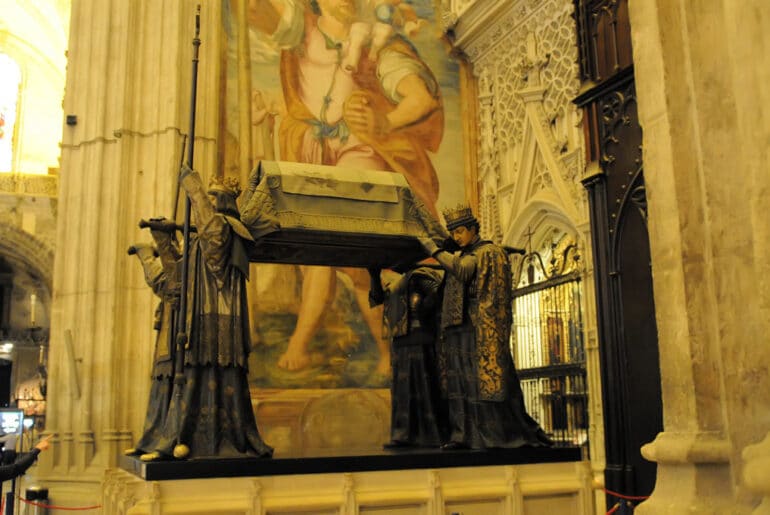
Regardless of how the annals of time judge him, Christopher Columbus will always be the non-religious figure who had the most significant impact on human history. There is mounting evidence that other Europeans had reached the Americas before Columbus, but he carried the news back to Europe and began New World colonization.
The Cathedral in Seville is where Christopher Columbus was laid to rest. His grave was widely believed to be his tomb when his bones were repatriated from the New World.
The Spanish city of Valladolid is where Columbus passed away. Columbus’s daughter-in-law sent his remains to the Dominican Republic to fulfil his dying desire, where they were interred in the Cathedral of Santo Domingo until 1795.
Columbus’ remains were taken by the retreating Spanish from the Caribbean and reinterred in Seville’s Cathedral.
The catafalque in the Cathedral is an exquisite work of art. Sculptures of the rulers of Castilla, Leon, Navarra, and Aragon carry Columbus’s coffin. Their tunics bear the different coats of arms of the kingdoms that make up Spain.
Seville Cathedral & La Gerald
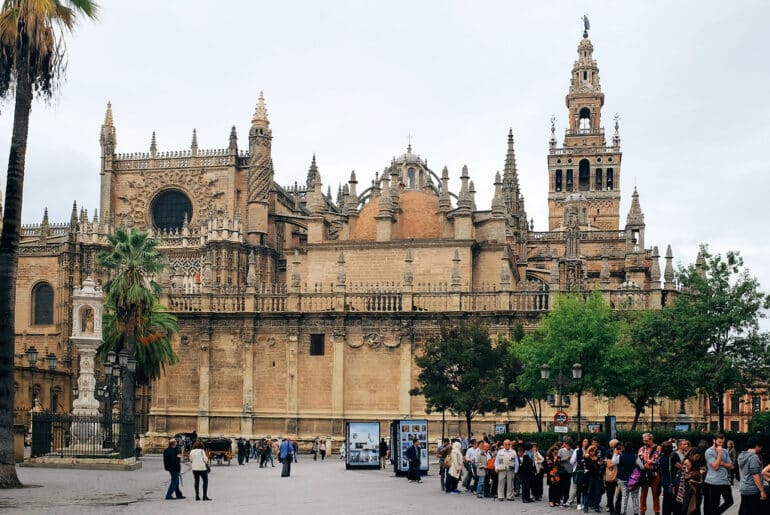
The Cathedral de Santa Mara de la Seda de Sevilla (in Spanish) is the biggest Gothic Cathedral and the third-largest church in the world. It’s not just the most prominent church that isn’t a basilica, but it’s also the largest Cathedral in the world. For the Archbishop of Seville, this is the place to be. Saint Mary of the See Cathedral is another name for this religious structure.
The Cathedral’s facade’s massive dimensions and elaborate design are immediately noticeable. The vast carved relief of the Last Judgment takes up much of the façade on the west side. The Cathedral’s interior is just as grand, with a vast nave, held up by many pillars. Several murals adorn the middle, and several sculptures, including a figure of the Virgin Mary, are in the altar area. A towering tower dominates the northern side of the Cathedral, while a giant rose window can be seen on the southern side. The Gerald Tower, along with the Seville Cathedral, is a must-see for every visitor to Spain and consistently ranks among the world’s most-visited structures.
Flamenco Show
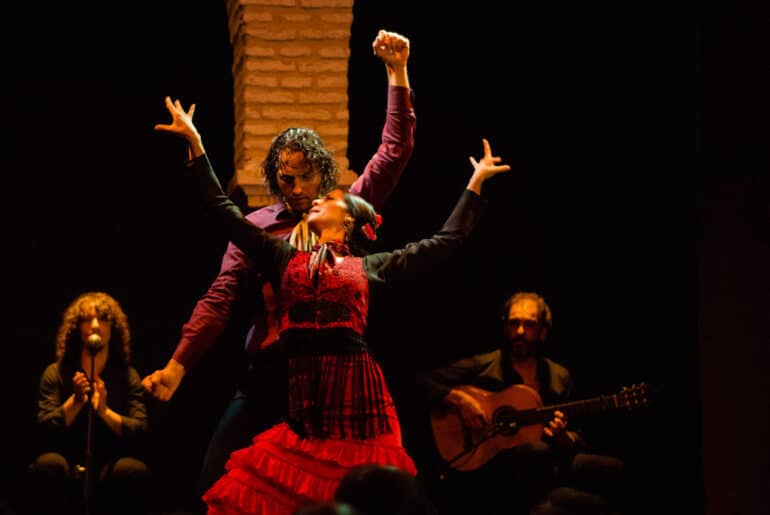
Put a flamenco show on your calendar whether you’re seeking romantic things in Seville or nighttime things in Seville. Flamenco dance is an expressive art developed in Andalusia, southern Spain, with Indian, Arabic, and Spanish influences. Flamenco is a performance art that combines singing, guitar playing, and dancing.
The flamenco dancer may often stand still and expressionless before breaking into a continuous clapping rhythm and foot stomping. She will then burst into a lovely dance with complicated movements as the music reaches its crescendo (which depends on the particular dance tradition).
Triana

Tirana is a neighborhood in the city of Seville that has been there since the city’s Moorish era. The Arabic word for “three,” from which the name Tirana is derived, alludes to the fact that the neighborhood’s three central communities—Santa Cruz, San Marcos, and San Lorenzo—are all named for the number three. There was a sizable Moorish population in the area until Christians conquered the city in 1248. They were all forcefully converted to Christianity.
Seeing Seville at night is like entering another world. All of the beautiful buildings have been illuminated. They eat and drink late in Spain! Come join the fun at Las Seats (the “mushrooms”) or a rooftop bar around 9 or 10 p.m.
Lastly, read more about travel around the world here.

